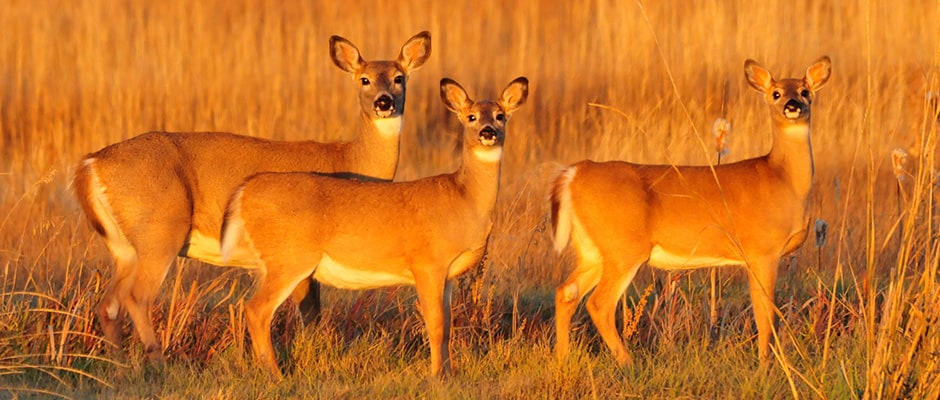Share this article
Turnips, Radishes and Peas Lure Deer Away From Livestock Feed
Researchers with South Dakota State University are finishing up a three-year study funded by the South Dakota Department of Fish, Game and Parks and the South Dakota Agricultural Experiment Station that will determine which fall cover crops lure deer away from livestock feed in South Dakota, particularly during the months of August and September.
The study is the first controlled experiment with fall cover crops, although some landowners experiment with cover crops and deer on their own, according to Jonathan Jenks, distinguished professor at the University’s Department of Natural Resource Management and lead researcher on the study. Landowners in the state are often faced with large herds of 100 to 200 deer eating their stored livestock feed including hay and distiller grains.
With limited information so far north in the Great Plains, South Dakota proved to be a good location for the study. Further, Jenks manages a captive deer herd of 50 white-tailed deer at the Wildlife and Fisheries Sciences Research Facility at South Dakota State University. “Because we have a captive deer herd at South Dakota State, there is more control when evaluating the deer rather than just planting crops and seeing what gets eaten,” Jenks said.
In response to SDFGP’s interest in forages that best attract deer, Jenks and graduate student Troy Weiberg put together a project evaluating a number of forages that had been used in other studies.
As part of the project, Jenks and Weiberg chose six cover crops based on previous literature from state biologists — purple top turnips, Daikon radishes, Austrian winter peas, winter rye, chicory and crimson clover — and planted them at the South Dakota State’s Wildlife and Fisheries Research Facility. Based on their data, they found that deer were particularly drawn to purple top turnips, Daikon radishes and Australian winter peas — likely because they are more digestible and have the highest protein content.
Jenks plans to provide wildlife officials with the results as soon as they are compiled. He hopes that his research will help provide wildlife officials recommendations in regards to which cover crops should be used to help manage South Dakota’s deer population.








